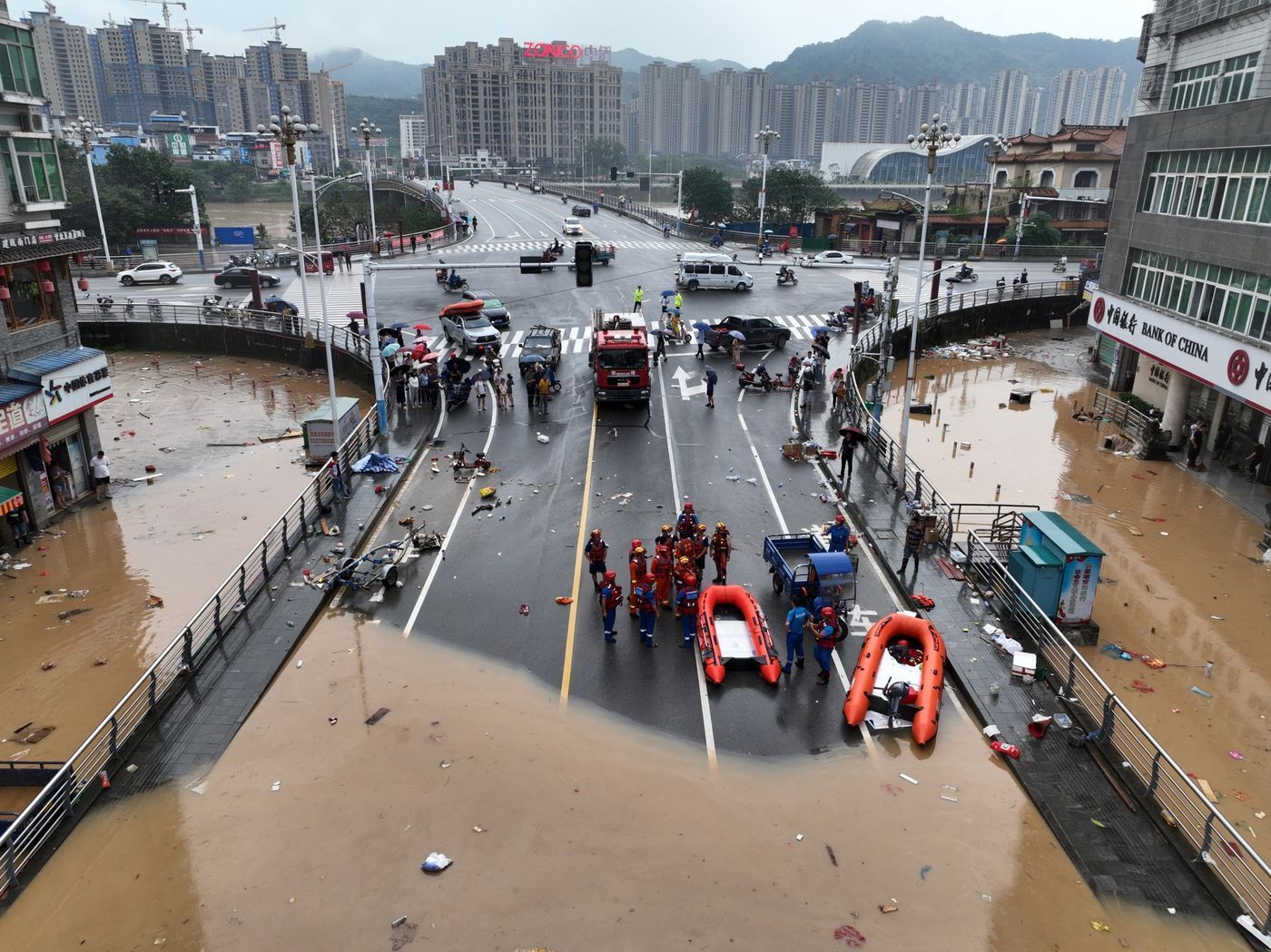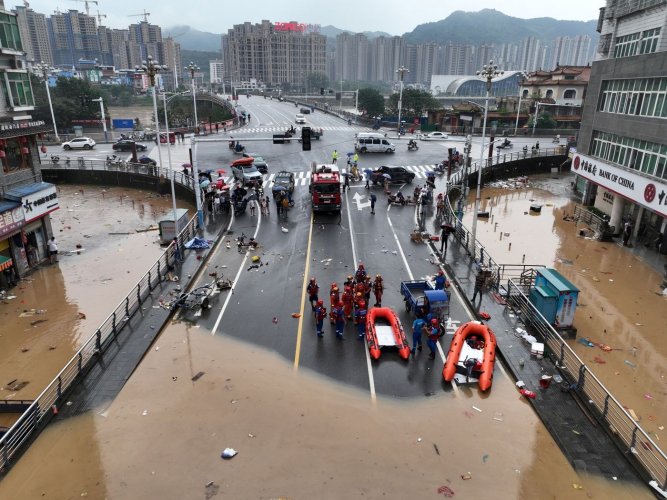In China, people from the southern provinces are forced to flee the floods to the northern regions, which suffer from abnormally high temperatures.
This indicates a double impact of climate change on the world's second largest economy, reports Bloomberg
In May, the average rainfall in Fujian, Guangdong and Guangxi reached 621 millimeters, the highest in 60 years. During this time, they took place along 117 rivers in the Pearl River Basin.
In addition, in June, the Guangzhou Production Center had the highest tide in a century, with a water depth of more than 2.6 meters.

Flood in Jiangou, Fujian Province, June 19

Evacuation of residents trapped after floods in Fujian province on June 19
“Floods are a regular occurrence in China in summer, especially in the lowlands along the Yangtze River and its tributaries. But they will become more extreme and frequent as the planet warms, according to China's latest Blue Book on Climate Change ", - it is said in the material.
On Monday, June 20, local authorities in the provinces of Zhejiang, Guangxi, Jiangxi and Hubei issued at least 14 storm warnings. According to the China National Climate Center, floods this year will be more extreme than historical levels.
Meanwhile, heat waves hit the northern and central provinces, and in some regions the average daytime temperature is 40 degrees Celsius. On June 16, more than 90 monitoring stations in Henan Province recorded ground temperatures that could be significantly higher due to concrete and asphalt surfaces exceeding 60 °C. On the same day, the temperature at eight stations reached 70 °C.
"Against the background of climate change, the environment in which extreme weather events occur is changing to varying degrees. The new climate norm means that current records will become what happens often," said Wang Jihua, a spokesman for China's Meteorological Administration. deadly floods in 2021.
We will remind, scientists have confirmed the direct connection between abnormal showers and human activities.
As EcoPolitics reported earlier, the costs of combating climate catastrophes increased by 800%.





